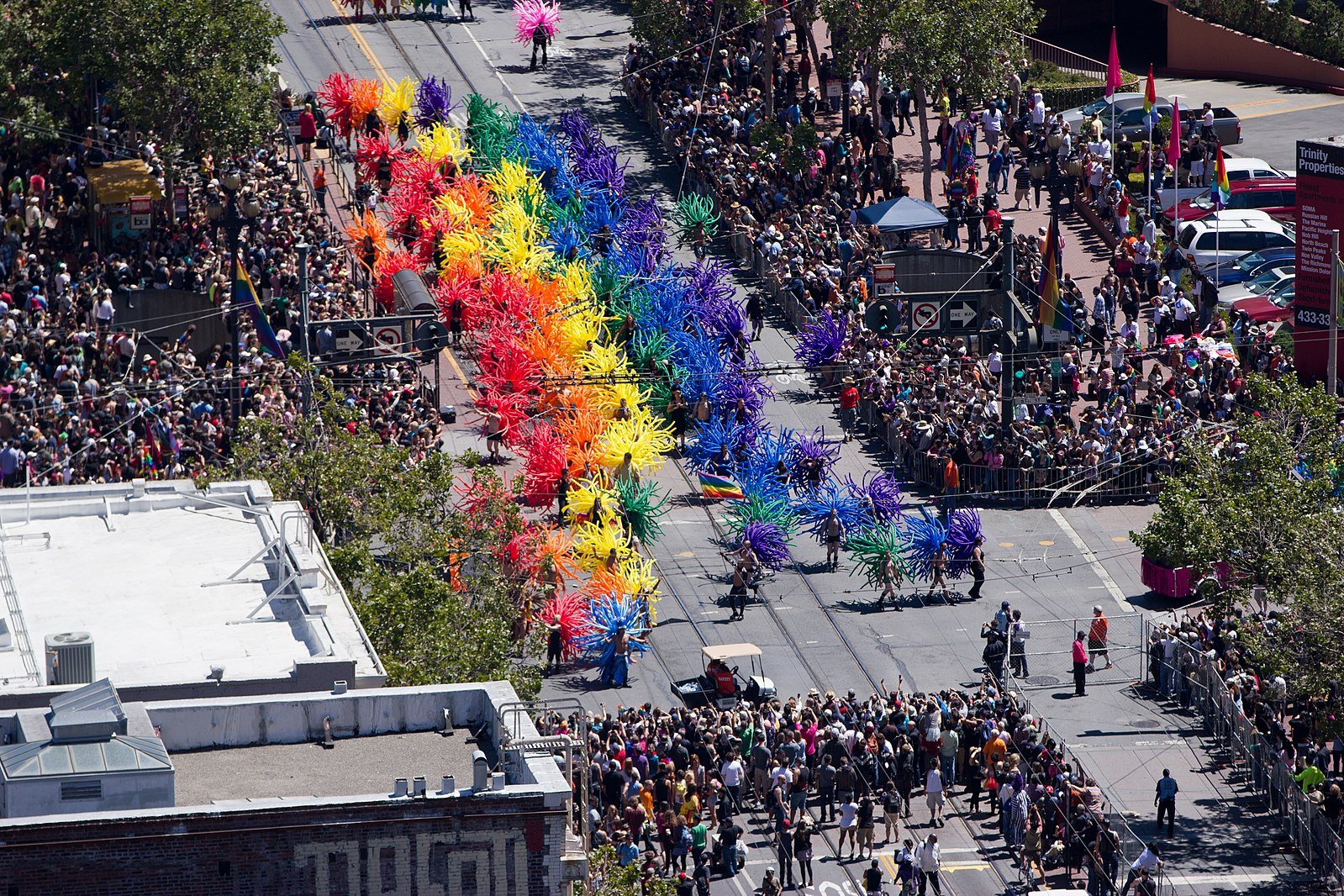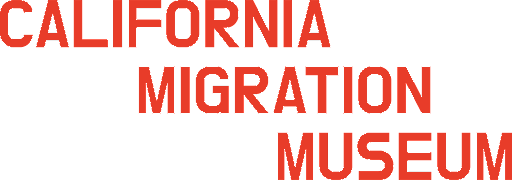
Castro: Lesson 2
The Audacity of Hope: Reconciling the Promise Against the Practice of American Ideals
Topic
American Ideals of Freedom, Representation, and Individual Rights
1. Explore the intersectionality of civil rights issues through close reading and corroboration
2. Evaluate the rhetoric of the American Revolutionary ideology
3. Relate civil liberties and civil rights across time periods
Objectives
U.S. History
On level through Advanced Placement and the International Baccalaureate, AP American Government and Politics, Civics
Grade
Essential Question
How can Americans reconcile the promise of American core values of freedom, representation, and individual rights against the practice of this ideology?
Overview
The basis of this lesson relates to information found in Scene 1: At Home in the Castro, Scene 2: Welcome to Eureka Valley, Scene 3: Landing in the Castro - 1957, Scene 1: The Salon, Scene 5: Harvey's Castro, Scene 6: Belonging Here, Scene 8: The Legacy from "At Home in the Castro" the CMM Castro Walk. This lesson plan gives students a space to understand the humanity of the LBGTQ+ community and the inclusion of the struggle for representation into the larger discussion of American civil rights and liberties.
When Thomas Jefferson wrote in the Declaration of Independence that "All Men are Created Equal" he owned over 100 enslaved people, including six of his own children. The American story is one of promise and one where the practice falls tragically short too often. For the LBGTQ+ community, the practice of inclusion, representation, and in some cases freedom itself continues to be at odds with the promise of the Revolutionary ideology of the American Founders articulated in the Declaration. For many students reconciling this dichotomy is difficult and can reflect their own struggles with inclusion and / or privilege.
Note: This lesson plan could potentially be a trigger for students and should be handled carefully.
Declaration of Independence , 1776
Materials
Students will need a pen, paper, computer, and access to wi-fi.
Key Ideas
Civil Rights, Civil Liberties, Bill of Rights, Liberty
Students will attempt to reconcile the practice and promise of American values across time periods, linking African American and LBGTQ+ civil rights and liberties in a broader fight for inclusion.
Assessment
Gay Rights Demonstration at the Democratic National Convention, New York City 1976, Library of Congress
-
Working individually have students read the Declaration of Independence and create a list of American values.
Have students generate a class list of these values on the board.
-
20 minutes
Students will work in several formations throughout the activity.
Begin by showing students the NPR gathering of Frederick Douglass's descendants reading his "What to the Slave is the Fourth of July?". This can be done as a class or by students individually or in small groups.
With a partner have students create a list of American values according to Douglass utilizing the transcript.
20 minutes
Next show students Harvey Milk's "Hope Speech". Teachers can choose between the two-minute recording of Harvey Milk or the scene from the movie "Milk", each only provides a two-minute clip for students to preview the speech.
With a different partner have students create a list of American values according to Harvey Milk utilizing the transcript of the entire speech.
-
Provide a space for a class discussion surrounding these lists. Question to ask the students to consider:
How do these men reconcile the promise of American ideals against the practice of these ideals in the United States?
-
Students should create their own list of American values (3 or more values) on a notecard or piece of paper as an exit ticket.
Lesson (75 Minutes Total):
Standards:
Historical and Social Science Analysis Skills (p727-728)
-
Students compare the present with the past, evaluating the consequences of past events and decisions and determining the lessons that were learned.
Students analyze how change happens at different times; understand that some aspects can change while others remain the same; and understand that change is complicated and affects not only technology and politics but also values and beliefs.
Students use a variety of maps and documents to interpret human movement, including major patterns of domestic and international migration, changing environmental preferences and settlement patterns, the frictions that develop between population groups, and the diffusion of ideas, technological innovations, and goods.
Students relate current events to the physical and human characteristics of places and regions.
-
Students identify bias and prejudice in historical interpretations.
Students construct and test hypotheses; collect, evaluate, and employ information for multiple primary and secondary sources; and apply it in oral and written presentations.
-
Students show the connections, casual and otherwise, between particular historical events and larger social, economic, and political trends and developments.
Students recognize the complexity of historical causes and effects, including the limitations on determining cause and effect.
Students interpret past events and issues within the context in which an event unfolded rather than soley in terms of present day norms and values.
Students understand the meaning, implication. and impact of historical events and recognize that events could have taken other directions.
Students analyze human modifications of landscapes and examine the resulting environmental policy issues.
-
11.8 Students analyze the economic boom and social transformation of post World War II America
4. Analyze new federal government spending on defense, welfare, interest on the national debt, and federal and state spending on education, including the California Master Plan.
7. Describe the effects on society and the economy of technological developments since 1915, including the computer revolution, changes in communication, advances in medicine, and improvements in agricultural technology.
8. Discuss forms of popular culture, with emphasis on their origins and geographic diffusion (e.g. jazz and other forms of popular music, professional sports, architectural and artistic styles).
11.11 Students analyze the major social problems and domestic policy issues in contemporary American society.
Explain how the federal, state, and local governments have responded to demographic and social changes such as population shifts to the suburbs, racial concentrations in the cities, Frostbelt-to-Sunbelt migration, international migration, decline of family farms, increases in out-of-wedlock- births, and drug use.
-
12.1 Students explain the fundamental principles and moral values of American democracy as expressed in the U.S. Constitution and other essential documents of American democracy.
2. Discuss the character of American democracy and its promise and perils as articulated by Alexis de Tocqueville.
3. Explain how the U.S. Constitution reflects a balance between the classical republican concern with promotion of the public good and the classical liberal concern with protecting individual rights; and discuss how the basic premises of liberal concern with protecting individual rights; and discuss how the basic premises of liberal constitutionalism and democracy are joined in the Declaration of Independence as "self-evident truths."
4. Understand that the Bill of Rights limits the powers of the federal government and state governments.
12.2 Students evaluate and take and defend positions on the scope and limits of rights and obligations as democratic citizens, the relationships among them, and how they are secured.
1. Discuss the meaning and importance of each of the rights guaranteed under the Bill of Rights and how each is secured (e.g., freedom of religion, speech, press, assembly, petition, privacy).
3. Discuss the individual's legal obligations to obey the law, serve as a juror, and pay taxes.
4. Understand the obligations of civic-mindness, including voting, being informed on civic issues, volunteering and performing public service, and serving in the military or alternative service.
5. Describe the reciprocity between rights and obligations; that is, why enjoyment o one's rights entails respect for the rights of others.
12.3 Students evaluate and take and defend positions on what the fundamental values and principles of civil society are (i.e., the autonomous sphere of voluntary personal, social. and economic relations that are not part of government), their interdependence, and the meaning and importance of those values and principles for a free society.
1. Explain how civil society provides opportunities for individuals to associate for social culture, religious, economic, and political purposes.
1. Explain how civil society makes it possible for people, individually or in association with others, to bring their influence to bear on government in ways other than voting and elections.
2. Compare the relationship of government and civil society in constitutional democracies to the relationship of government and civil society in authoritarian and totalitarian regimes.
12.5 Students summarize landmark U.S. Supreme Court Interpretations of the Constitution and its amendments.
1. Understand the changing interpretations of the Bill of Rights over time, including interpretations of the basic freedoms religion, speech, press. petition, and assembly) articulated in the First Amendment and the due process and equal-protection-of-the-law clauses of the fourteenth amendment.
12.8 Students evaluate and take and defend positions on the influence o the media on American political lifeе.
1. Discuss the meaning and importance of a free and responsible press.
2. Describe the roles of broadcast, print, and electronic media, including the Internet, as means of communication in American politics.
3. Explain how public officials use the media to communicate with the citizenry and to shape public opinion.
12.10 Students formulate questions about and defend their analyses of tensions within our constitutional democracy and the importance to maintaining a balance between the following concepts: majority rule and individual rights; liberty and equality; state and national authority in a federal system: civil disobedience and the rule to law: freedom of the press and the right to a fair trial; the relationship of religion and government.


